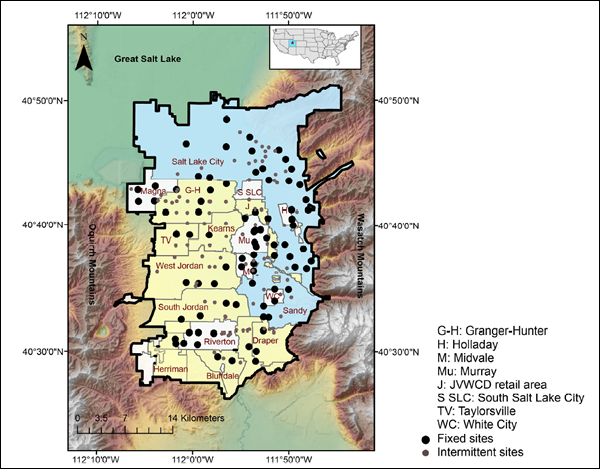News and Highlights
This is a list of past iUTAH EPSCoR news from 2012 to 2018.
November 21, 2016
Travel Grants Help Participants Attend AGU
As part of ongoing professional development support for participants, iUTAH provides travel grants for presenting iUTAH research at conferences. Students, researchers, and instrument technicians have been funded to attend the 2016 American Geophysical Union (AGU) Fall Meeting, which starts December 12 in San Francisco, CA. This year’s funded participants include:
Hannah Checketts, graduate student, BYU
Dylan Dastrup, GAMUT instrumentation technician, BYU
Dave Eiriksson, GAMUT instrumentation technician, UU
Rachel Gabor, iUTAH postdoctoral research fellow, UU
Amber Jones, iUTAH data manager and research engineer, USU
Brian Packer, graduate student, BYU
Matt Randall, graduate student, BYU
Undergraduate students, as well as other participants are encouraged to apply. To request funding for an upcoming conference, visit the iUTAH Participant Portal, and select the Support tab. In order to receive funding you must be presenting iUTAH-related research. It is recommended that you have a commitment of matching funds from your academic institution.
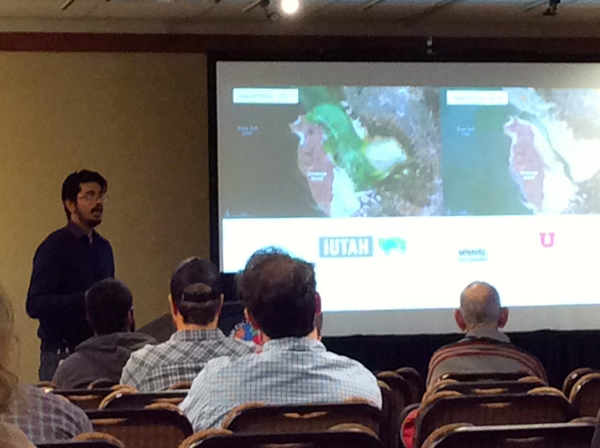
November 15, 2016
Fall All-Hands Meeting Looks to the Future
iUTAH held its third All-Hands meeting of the year on Friday, November 4, 2016, at the Courtyard Marriott in Provo, UT. The conference attracted nearly 70 participants who came together to discuss the “Focus on Facilities” theme, in hopes of inspiring initiatives and grant writing opportunities for research, training, education, and outreach as we move into iUTAH 2.0. Participants at the meeting shared their progress as our facilities were highlighted as catalysts for the next generation of iUTAH collaborative, multi-institutional, interdisciplinary research.
The opening welcome and conference overview was given by iUTAH Project Director Michelle Baker where she reviewed project goals and strategies for sustainability of the program. She also introduced GAMUT, GIRF, Visualization Lab (iVL), and Cyberinfrastructure as facilities that would be explored in more detail throughout the day.
Presenters at the meeting included Jeff Horsburgh, Taya Carothers, Amber Jones, Dave Eiriksson, Christine Pomeroy, Pratibha Sapkota, Martin Buchert, and Melissa Haeffner, all with iUTAH. Students Tony Melcher, Utah State University, and Treven Edwards, University of Utah, presented on research they had done with iUTAH Mentors. The final presentation of the day given by Laura Hanson of the Jordan River Commission, and was titled “How an Inventory of Open Space along the Jordan River Corridor is Assisting Regional Land Use, Conservation, and Natural Resource Management Planning.” It highlighted the successful collaboration between her organization and the iVL group in the development of models.
“The meeting was a wonderful example of people having moved past the point of getting to know each other,” said University of Utah professor and State Program Director of EPSCoR Paul Brooks. “Now it was almost difficult to get through the program because there were so many just incredibly important, engaging conversations about the future, about accomplishments, about look what we’ve done, and looking to what we could do.”
In addition to presentations, participants also had ample opportunity to connect in networking sessions with other collaborators from across the state. Some presentations can be found on our website in pdf form:
Cyberinfrastructure and HydroShare
—Dr. Jeffery Horsburgh, iUTAH Cyberinfrastructure Co-lead, Utah State University
GAMUT: The Final Frontier
—Amber Jones, iUTAH Data Manager, Utah State University
Research Activities and Opportunities at the iUTAH Green Infrastructure Research Facility (GIRF)
—Dr. Christine Pomeroy, iUTAH RFA2 Co-lead, University of Utah
The 2017 iUTAH Spring All-Hands Meeting will take place on Friday, March 31, 2017 at the University of Utah in Salt Lake City, UT, as part of a larger Broader Impacts in Research Conference hosted in partnership with the Office of the Vice President for Research at the University of Utah.
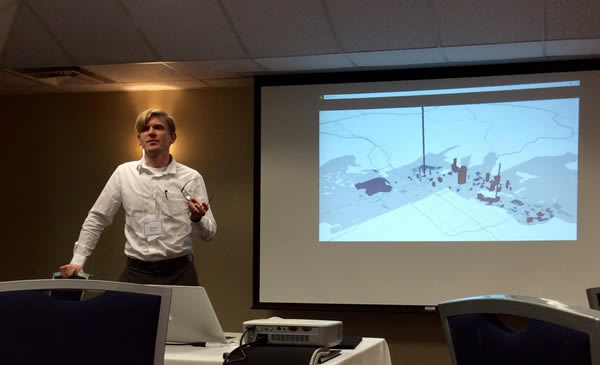
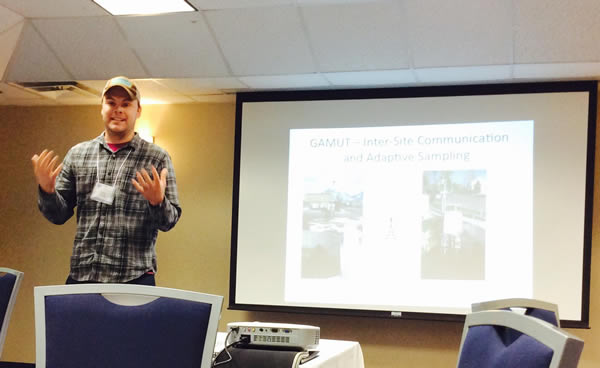
November 8, 2016
Computer Model Tracking Precipitation Makes The News
University of Utah and iUTAH researcher Court Strong was recently featured in the news. Fox 13 News recently revisited a report prepared for Governor Huntsman a decade ago that made some predictions about warming in Utah.
An excerpt from the TV news story said that “a third prediction in the report was that more precipitation would fall as rain instead of snow. Dr. Court Strong, a professor at the University of Utah, uses high-tech computer models to track precipitation. ‘At some of the lower elevations we do see a decline in the snowpack,’ he said. His research indicates we are still in the beginning stages of this transition. But because of warming, less precipitation comes as snow. Once it's on the ground, the snow that does fall melts earlier and faster.”
Revisiting each prediction showed that the decade-old report has come true as Utah continues to see bigger storms, warmer temperatures, less snow, and compromised water quality that will continue.
Press: Fox 13 News
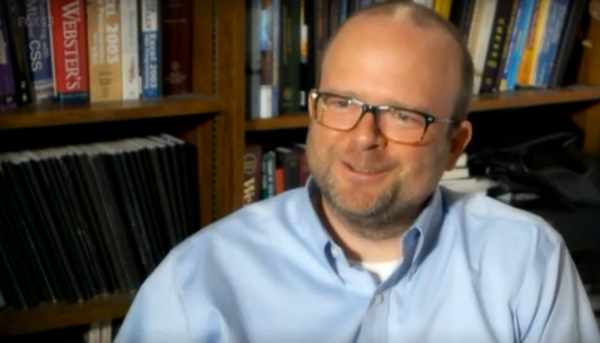
November 2, 2016
iUTAH Researchers Publish Urban Typology Paper
In a recently published paper in the online journal, Cities and the Environment, iUTAH researchers examined the development of a multi-dimensional classification scheme that identifies distinct configurations of ‘urban forms’ in Northern Utah. The intent of the paper is to advance or answer the following research questions:
i. What measurable attributes of urban neighborhoods have been linked in the scientific literature to a range of water outcomes (demand, quality, and ecohydrology)?
ii. To what extent do urban neighborhoods reflect distinctive combinations of these measurable attributes?
iii. Are urban neighborhood types systematically associated with resident water attitudes and behaviors?
iv. How can a formal typology of urban neighborhoods be used to guide the scientific study and practical management of urban water systems?
While the examples and classifications are regional, the paper is directed at a methodology that relies on publically available data and can be used in other urban areas. Authors of the article include Douglas B. Jackson-Smith, Philip A. Stoker, Martin Buchert, Joanna Endter-Wada, Carlos V. Licon, Molly S. Cannon, Shujuan Li, Zack Bjerregaard, and Luke Bell.
The article can be viewed in its entirety under the title Differentiating Urban Forms: A Neighborhood Typology for Understanding Urban Water Systems.

October 28, 2016
Students Present Research at National Diversity Conference
Two iUTAH students, Joydino Beyale and Luis Vidal, were among the many undergraduate students presenting research at the Society for the Advancement of Chicanos/Hispanics and Native Americans in Science (SACNAS) National Conference for Diversity in STEM in Long Beach, CA, on October 13-15, 2016.
Research for their presentations at SACNAS started last summer, when the two students were accepted into the iUTAH iFellows undergraduate research experience. This 11-week program culminated in the creation of a formal presentation and paper on the topics listed below.
- Joydino Beyale, USU Eastern in Blanding, presented on Determining the Quantity and Quality of Rainwater Drainage from Various Rooftops
- Luis Vidal, University of Utah, presented on Cross Cutting Relationships Among Community Concerns and Green Urban Infrastructure in the Jordan River Corridor
Ellen Eiriksson, iUTAH Education, Outreach and Diversity Coordinator, said “iUTAH is proud to not only provide research opportunities for undergraduate students from across Utah, but also support students in sharing their research at relevant conferences”
“It was a little intimidating at first with so many people” said Vidal, a junior studying Geology and Environmental Science at the University of Utah. “There was a great sense of inclusion in the conference and being around other students with similar backgrounds, especially when meeting other earth scientists of similar backgrounds.”
For Beyale, who is finishing his general studies at Utah State University Eastern in Blanding and plans to major in Environmental Engineering, the best part was the “many workshops and people to talk to, “ adding “being part of SACNAS has opened up a whole new beginning for me.”
While time was tight at the conference, which had record turnout with more than 4,000 attendees, and 1,000 student research presenters, students found opportunities to learn about graduate schools and internships, meet faculty and students from schools throughout the U.S., and get information about key resources and programs. The 2017 SACNAS National Conference will be held on October 19-21, 2017 in Salt Lake City, Utah, providing more Utah students and researchers a chance to attend.
“Both Luis and Joydino's iFellows research allowed them to connect with a wide audience” said Eiriksson. “Their iUTAH faculty mentors helped the students develop skills to share this research on a national scale, and we hope they now feel empowered to use this research and skills to positively impact their communities.”
When asked what advice they would give to other students interested in going to undergraduate conferences, Beyale said “work hard, get involve with your college, and most importantly be connected with your mentors and professors.”
Press: Utah State Today | UU News
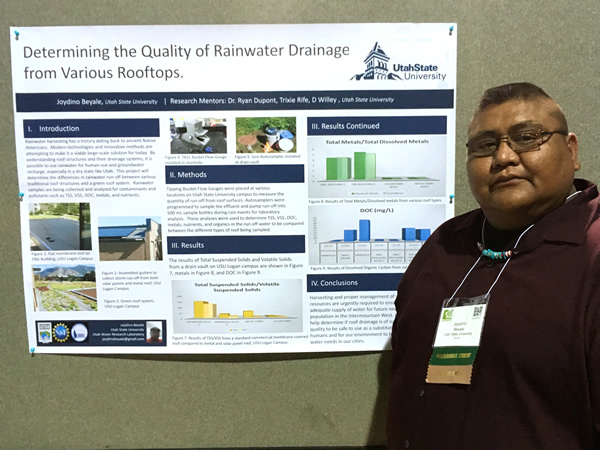
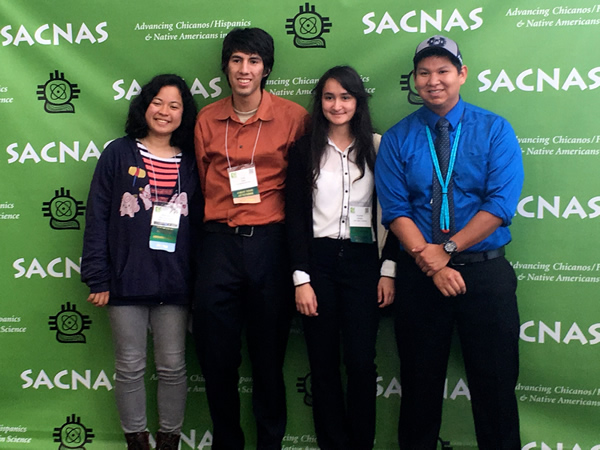
October 27, 2016
New Publication Maps Salt Lake's Tap Water
iUTAH researchers Yusuf Jameel, a University of Utah graduate student, Geology and Geophysics professor Gabriel Bowen, and James Ehleringer, distinguished professor of biology, and colleagues sampled tap water throughout the Salt Lake Valley to see if stable isotopes of oxygen and hydrogen in the water could be used to study the various sources of water for the valley’s more than one million residents. The results of this study have been published in Water Resources Research.
A media release provided by the University of Utah’s science writer Paul Gabrielsen said, “The team found strong spatial patterns within the more than 800 tap water samples, indicative of how different sources of water are used in different parts of the valley. Isotopic signatures emphasized the importance of mountain snow to the valley’s water supply. The isotope signatures varied by season, reflecting the contribution of surface water. The team’s results show that isotopes of tap water can be used to study how water is used over a large urban area, offering new tools for effective management of a precious and limited resource.
As Utah’s population continues to grow, water managers and water scientists are looking more at water’s journey to our taps. Drinking water can come from a variety of sources, including lakes, streams and groundwater. Of those sources, mountain snow and spring runoff also play a significant role.”
Journal Reference: Water Resources Research
